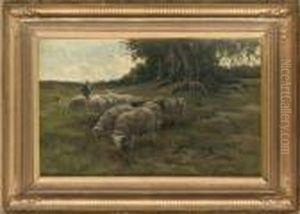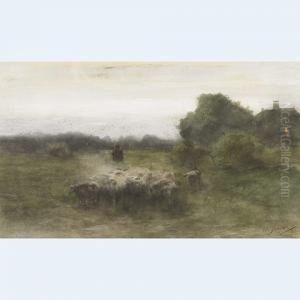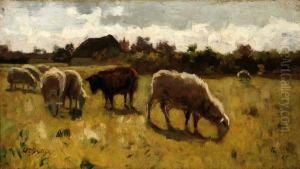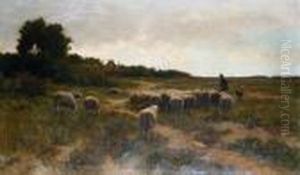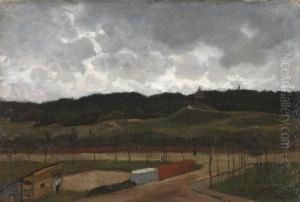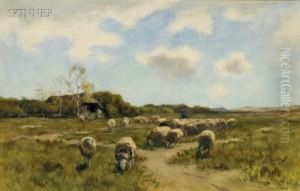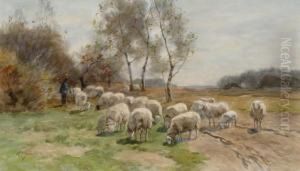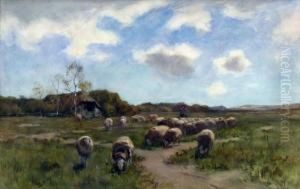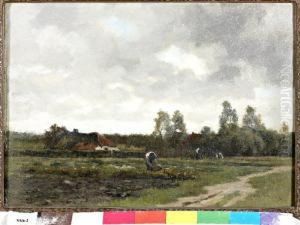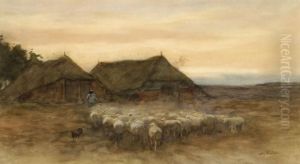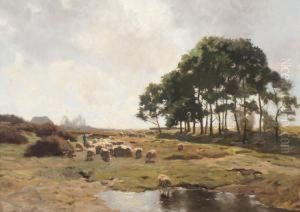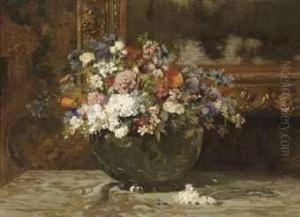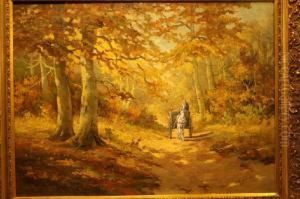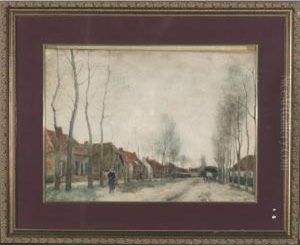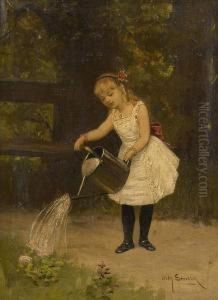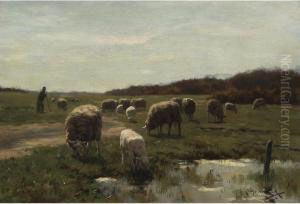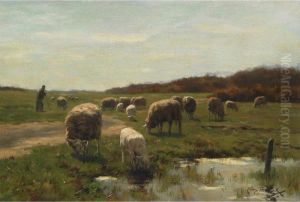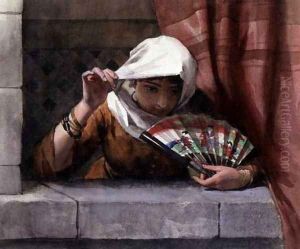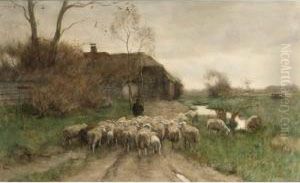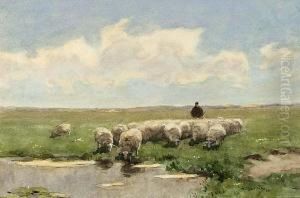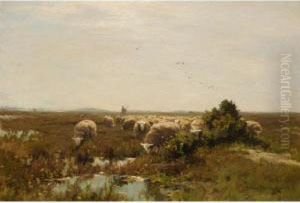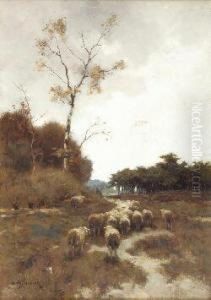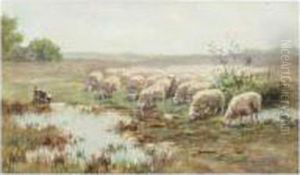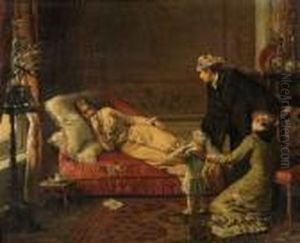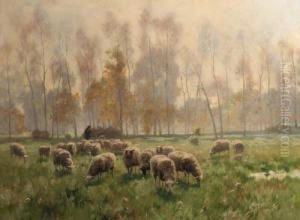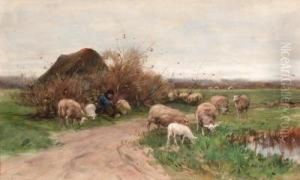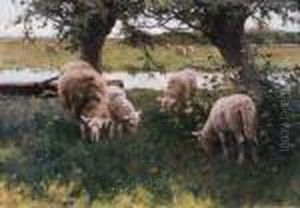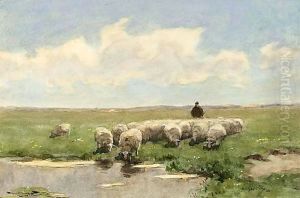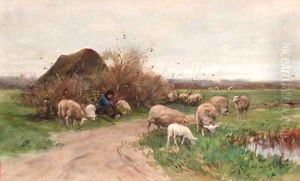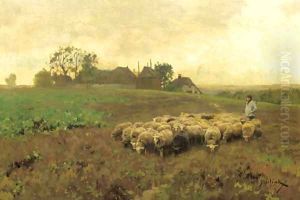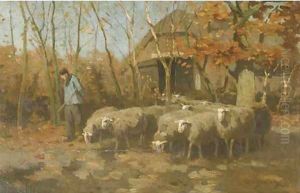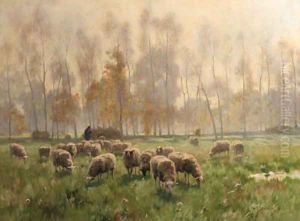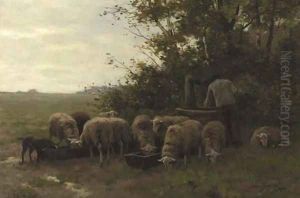Willem II Steelink Paintings
Willem Steelink II was a Dutch painter and etcher, born in Amsterdam on May 5, 1856. He was the son of Willem Steelink I, who was also an artist, primarily known for his work as an engraver. Following in his father's footsteps, Steelink II initially focused on etching but later became more renowned for his paintings.
Steelink II received his formal art education at the Rijksakademie van beeldende kunsten (State Academy of Fine Arts) in Amsterdam. He was a student under the guidance of Barend Wijnveld and later, Allebé August. His early career was marked by a focus on etching, but he gradually transitioned to painting, which eventually became his primary medium.
His artistic style was rooted in the tradition of the Dutch school of painting, and he is best known for his genre scenes, landscapes, and animal paintings, particularly his realistic depictions of dogs and horses. Steelink II's work reflected his keen observation of rural life and nature. His attention to detail and ability to capture the nuances of light and shadow won him considerable acclaim during his lifetime.
Willem Steelink II was not only active as a painter but also involved in the art community as a member of the Arti et Amicitiae (Art and Friendship), a well-known art society in Amsterdam. His works were exhibited widely in the Netherlands and also gained recognition abroad.
Later in his career, Steelink II faced financial difficulties, which led him to produce more commercial work, including book illustrations and portraits. Despite these challenges, he continued to work on his own artistic projects and maintained a reputation for high-quality craftsmanship.
Willem Steelink II passed away on April 28, 1928, in the town of Voorburg, Netherlands. His legacy includes a body of work that captures the essence of 19th-century Dutch rural life and contributes to the rich tradition of Dutch realism in art. Steelink's works remain of interest to collectors and are held in various Dutch museums, reflecting his enduring contribution to the art world.
